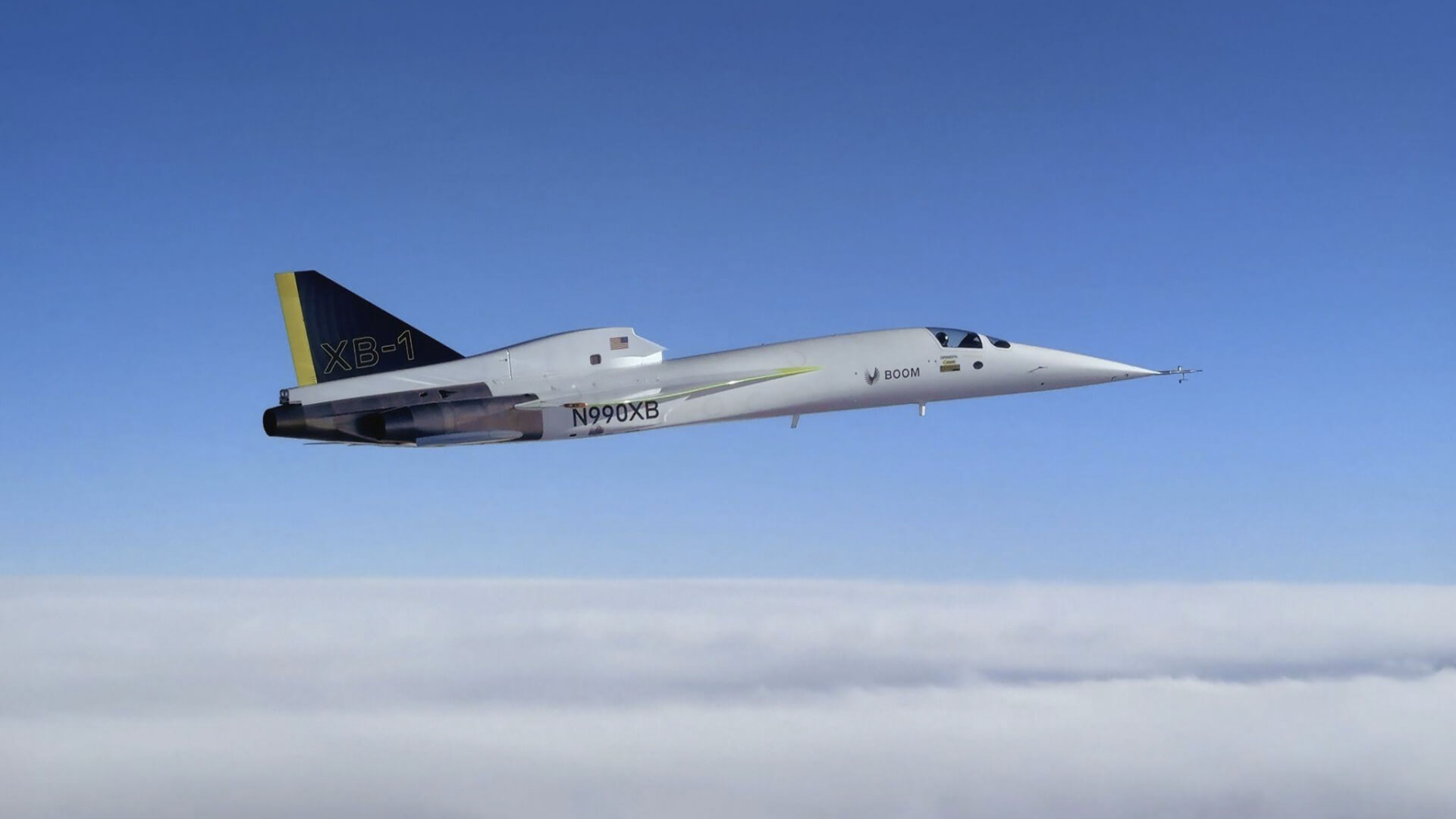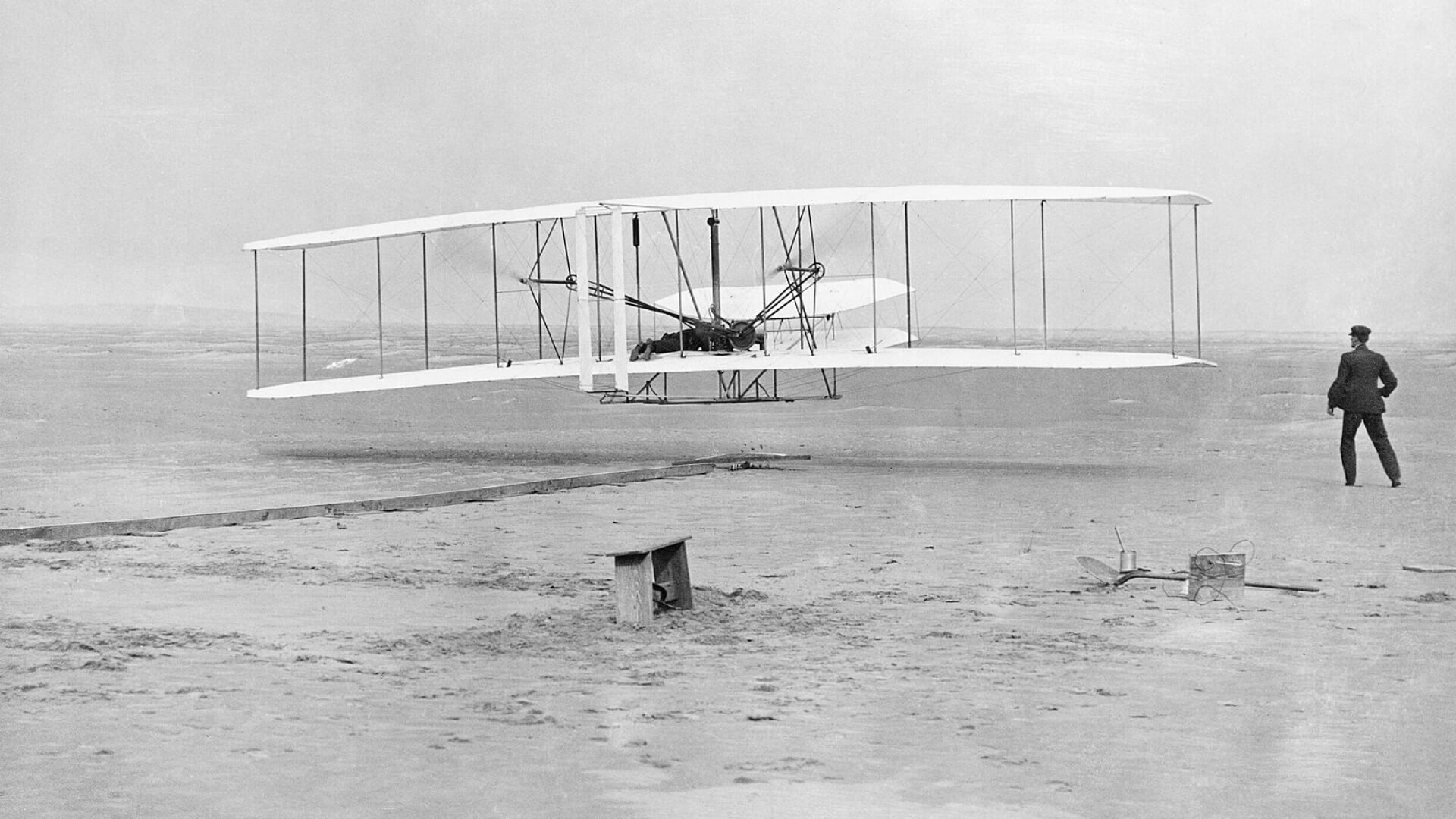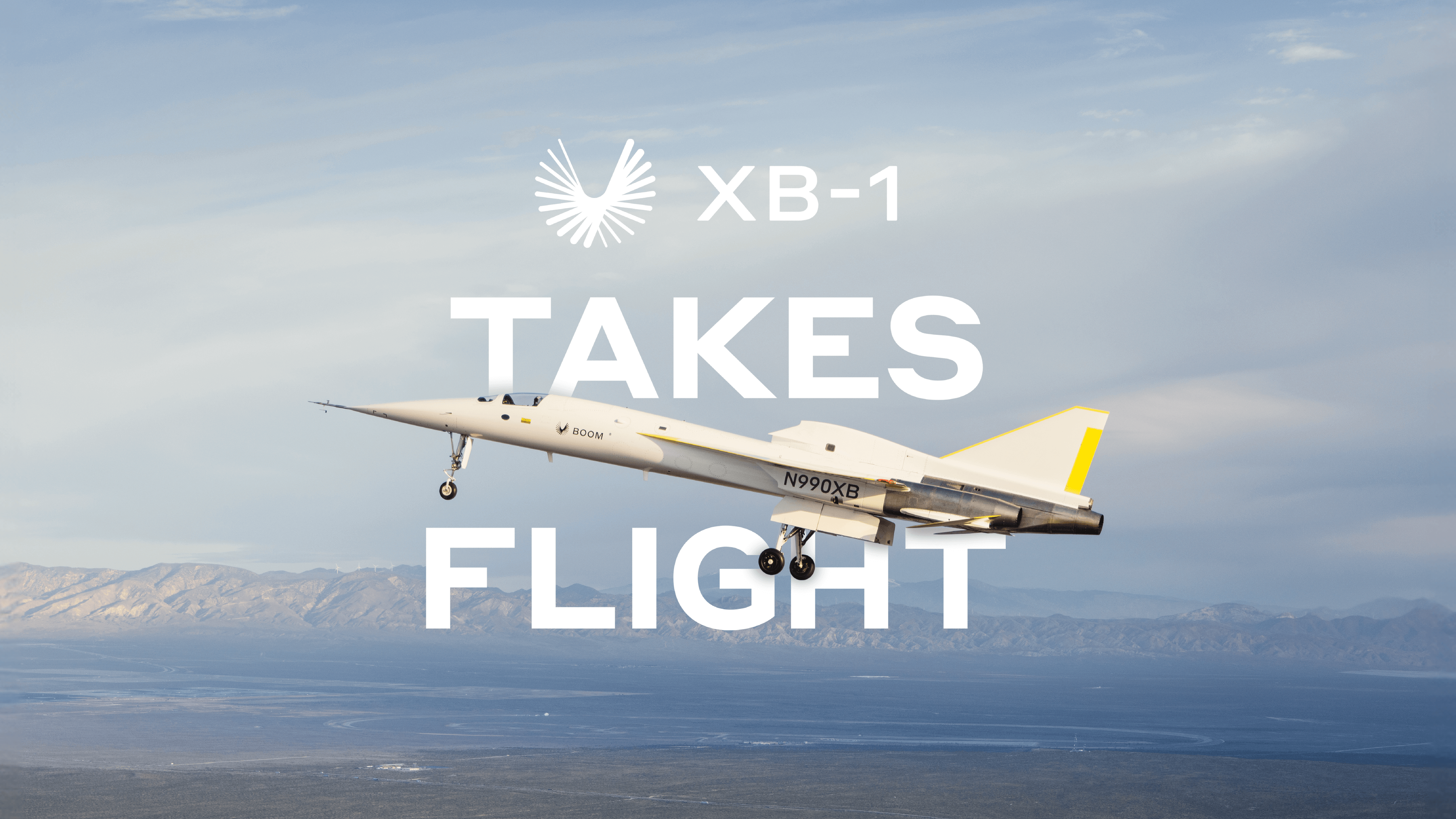Today, Boom announced the successful flight of XB-1, the world’s first independently developed supersonic jet, at the Mojave Air & Space Port in Mojave, California. Like Overture, Boom’s supersonic airliner, XB-1 leverages state-of-the-art technologies to enable efficient supersonic flight including carbon fiber composites, advanced avionics, digitally-optimized aerodynamics, and an advanced supersonic propulsion system.
“Today, XB-1 took flight in the same hallowed airspace where the Bell X-1 first broke the sound barrier in 1947,” said Blake Scholl, founder and CEO of Boom Supersonic. “I’ve been looking forward to this flight since founding Boom in 2014, and it marks the most significant milestone yet on our path to bring supersonic travel to passengers worldwide.”

Flown by Chief Test Pilot Bill “Doc” Shoemaker, XB-1 took off from the Mojave Air & Space Port and flew in the same airspace that hosted many historic first flights, including the flights of the Bell X-1, the North American X-15, and the Lockheed SR-71 Blackbird.

“Everyone on the XB-1 team should be incredibly proud of this achievement,” said Bill “Doc” Shoemaker, Chief Test Pilot for Boom Supersonic. “It has been a privilege to share this journey with so many dedicated and talented professionals. The experience we have gained in reaching this milestone will be invaluable to Boom’s revival of supersonic travel.”
Test Pilot Tristan “Geppetto” Brandenburg flew the T-38 chase aircraft which monitored XB-1 in the air. Chase planes accompany new aircraft on their maiden flights to observe how the test plane is handling and verify things like altitude, airspeed, and airworthiness during flight.

“Being in the air with XB-1 during its maiden flight is a moment I will never forget,” said Boom Test Pilot Tristan “Geppetto” Brandenburg. “The team has been working hard to get to this point, and seeing today’s flight through mission completion is a huge accomplishment for all of us.”

XB-1 met all of its test objectives, including safely and successfully achieving an altitude of 7,120 feet and speeds up to 238 knots (273 mph). While XB-1 was in the air, the team performed an initial assessment of the aircraft’s handling qualities, including airspeed checks with the T-38 chase aircraft, and assessing the aircraft’s stability in the landing attitude (at a high angle of attack).


Two decades after Concorde’s retirement, the first flight of XB-1 marks the return of a civil supersonic aircraft to the skies and paves the way for the revival of mainstream supersonic travel onboard Overture, Boom’s sustainable supersonic airliner.

“I’ve been waiting over 20 years for an environmentally friendly successor to Concorde and XB-1’s first flight is a major landmark towards my dreams being realized. When I last flew Concorde in 2003 I knew that this day would come. The first flight of the XB-1 supersonic demonstrator is a significant achievement toward making sustainable supersonic flight a reality, aboard Overture – my #1 choice as the successor to Concorde,” said Captain Mike Bannister, former Chief Concorde Pilot for British Airways. “Congratulations to Blake Scholl, all at Boom and especially its pilot, Bill “Doc” Shoemaker. Having been Concorde’s Chief Pilot I envy his role in this exciting return towards mainstream supersonic flight.”
The XB-1 program provides the foundation for Overture’s design and development, while establishing a safety-first culture in engineering and manufacturing. XB-1 validates key technologies and Boom’s own innovations, including:

Augmented reality vision system: Two nose-mounted cameras, digitally augmented with attitude and flight path indications, feed a high resolution pilot display enabling excellent runway visibility. This system enables improved aerodynamic efficiency without the weight and complexity of a movable nose.

Digitally-optimized aerodynamics: Engineers used computational fluid dynamics simulations to explore thousands of designs for XB-1. The result is an optimized design that combines safe and stable operation at takeoff and landing with efficiency at supersonic speeds.

Carbon fiber composites: XB-1 is almost entirely made from carbon fiber composite materials, enabling it to realize a sophisticated aerodynamic design in a strong, lightweight structure.

Supersonic intakes: XB-1’s engine intakes slow supersonic air to subsonic speeds, efficiently converting kinetic energy into pressure energy, allowing conventional jet engines to power XB-1 from takeoff through supersonic flight.
“Boom Supersonic is the first civil business entity to create its own X-plane, a supersonic demonstrator,” said Ric Parker, Chair of Singapore Aerospace Programme, former Rolls-Royce CTO and Boom Advisory Council member. “This milestone is on the critical path to deliver Overture, the first supersonic transport aircraft to enter service in over half a century. It is such an exciting time to be involved!”

It is fitting that XB-1 took off for the first time from the Mojave Air & Space Port, in airspace known as the home of many firsts in the world of aviation and aerospace. This region in the Mojave Desert is the proving grounds for the aerospace industry, where an aircraft broke the sound barrier for the first time in 1947 and where speed and altitude records are set.
Now that XB-1 has successfully completed its first flight, the team will systematically expand the flight envelope to confirm its performance and handling qualities through and beyond Mach 1. When XB-1 is ready for its first supersonic flight, Test Pilot Tristan “Geppetto” Brandenberg will be at the controls.

The inaugural flight of XB-1 takes place as Overture continues to advance toward production, with a growing global network of Tier 1 suppliers and an order book including 130 orders and pre-orders from American Airlines, United Airlines, and Japan Airlines.
“Congratulations to Boom on the XB-1’s first flight,” said Akasaka Yuji, Representative Director, CEO Japan Airlines. “I am looking forward to seeing your realization of sustainable supersonic flight to and from Japan.”

Overture will carry 64-80 passengers at Mach 1.7, about twice the speed of today’s subsonic airliners. Optimized for speed, safety, and sustainability, Overture is designed to run on up to 100% sustainable aviation fuel (SAF).
“Boom Supersonic’s remarkable achievements are a testament to the power of dreaming and doing,” said Amy Spowart, President & CEO of The National Aeronautical Association. “Like Sir Frank Whittle, Blake, and Boom, achieved what others tried and no other could with XB-1. Congratulations to the XB-1 team, including Chief Test Pilot, Bill “Doc” Shoemaker! The National Aeronautic Association looks forward to celebrating your milestones in the historic fashion of the shoulders on which we all stand.”







